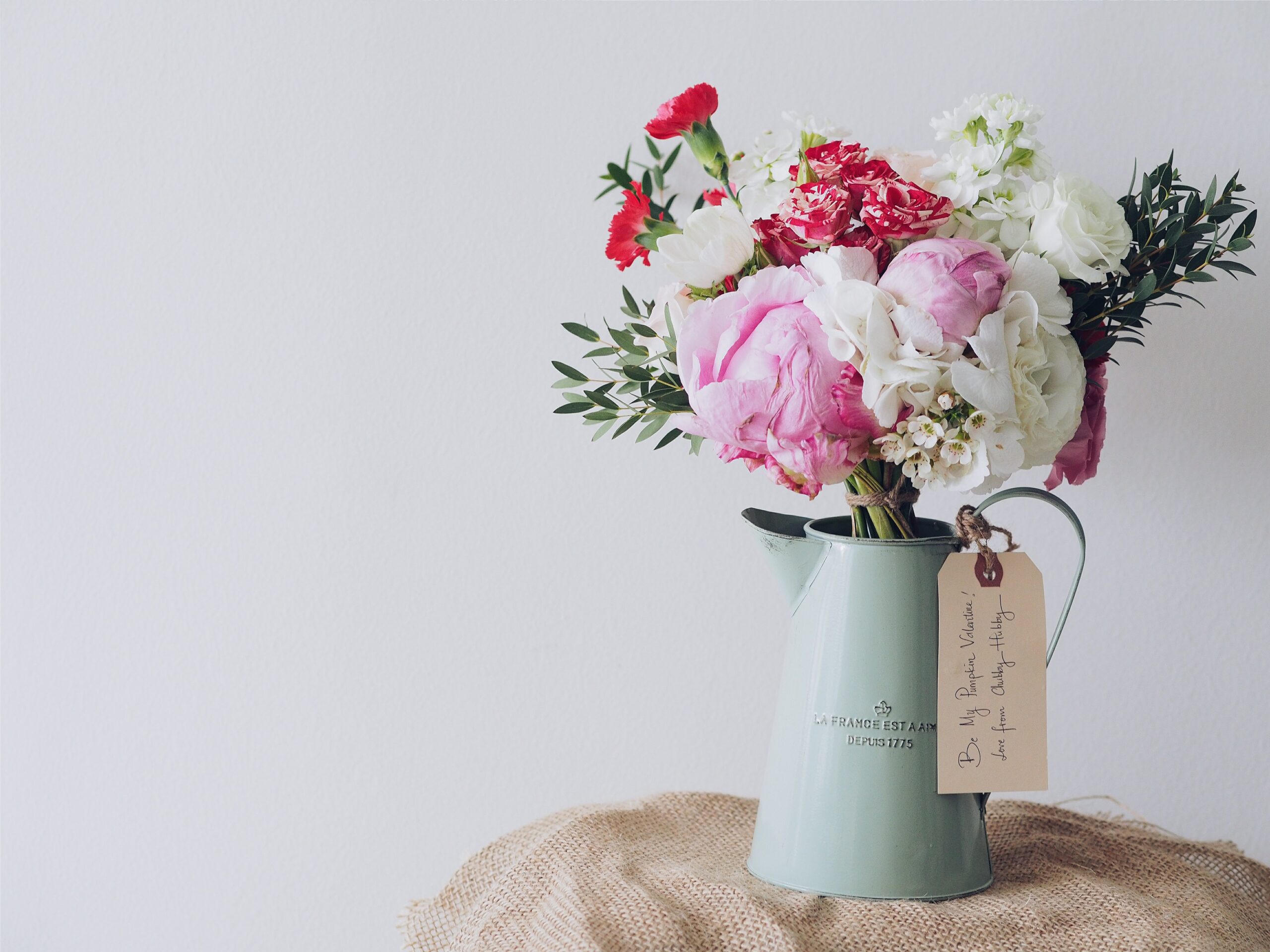Happy Valentines Day, lovers! In hindsight, this blog post would have been much more helpful in the lead-up to today, but there we are. Hopefully it’ll be useful going forward! That said, please don’t feel guilty if you bought/received a bunch of flowers today without knowing some of this info – any act of love from one human to another is something to be celebrated.
I wanted to write about the sustainability of cut flowers because I personally had not considered it until a couple of years ago. For some reason, I think probably because we think of them as being ‘natural’ and because they have so many positive connotations, the ethical and sustainable implications of the cut flower industry goes over our heads. Rest assured, it is 100% possible to buy a beautiful bouquet for someone that hasn’t harmed people or the planet on its journey, but there are a few things to consider…
Firstly, you have to look at where the flowers have come from, much the same as checking the origin on food packaging (which I think more people are doing nowadays). Unfortunately, luscious pink roses are most definitely not in season in the UK in February, so try to steer clear of them – even though they’re the V Day classic! Around 90% of flowers sold in the UK are imported, lots of them coming all the way from Africa. As an example, my friend Poppy explains that in the week running up to Valentine’s, around 70% of roses that will eventually be sold in the UK are cut in Kenya – about 4500 miles from the UK. In one particular area, what was once a freshwater lake – a grazing land for the Masai, is now hidden by plastic tunnels growing roses. About 800 million flowers travel from here to Europe for Valentine’s Day alone, giving the industry a massive carbon footprint.
As flower farming is often on an industrial scale, this also means the use of pesticides/herbicides/fungicides is prevalent. This helps large corporations to produce on a larger scale for less money, maximising profits – but damaging the environment. Because cut flowers aren’t edible, pesticide use isn’t nearly as regulated. The runoff of these products severely damages the surrounding ecosystem, harming not only the environment but the local peoples’ health and livelihoods. For those who work in the area, farming becomes more difficult as soil becomes toxic, and those working in the flower farms often experience low pay and poor working/living conditions.
This is a classic example of the western world exploiting those in more vulnerable positions. All we see are the perfect flowers in the supermarket or the florist; we are blind to the variety of issues they leave behind, such as polluted waterways and poor human quality of life. To combat this, we must buy organic, local, and seasonal flowers. If you still want to buy flowers from overseas to support the many people whose livelihoods depend on it, always buy fair-trade to ensure high working standards have been adhered to. This almost reminds me of my blog post on sustainable crystals – you cannot use something for your own spiritual growth if it has harmed others on its way to you. In this case, it seems counterproductive to gift someone flowers to symbolise love if other people/the planet are getting the opposite of love from the industry.
My parting advice would be to get creative. How else could you show someone you love them? It’s convenient for us to just pick up a bunch of flowers from Tesco, but we can’t ignore the costs of doing so to others. Maybe make them something, or buy from a local florist growing their own flowers – for example, Divina Botanica in Bristol who I made a flower crown with last summer. There are so many options if you look out for them. Definitely do a little bit of research though, as good intentions don’t always work out – after I told Olly about this last year, for Valentine’s Day he bought me a bouquet of flowers from a local florist labelled as “sustainable and seasonal” – but many of the flowers in it were summer bloomers! Needless to say, that wasn’t Olly’s fault and they were beautiful, so I made them last as long as possible!
Clearly, there is a lot of progress to be made with this specific issue, mainly in that nobody really knows about it. But you’ve just helped to rectify that by reading this blog post, so we’re one step closer 🙂 wahoooo!! Lotsa love x

Leave a Reply